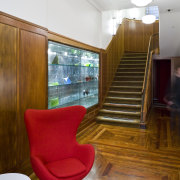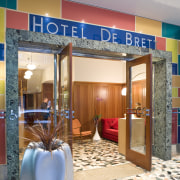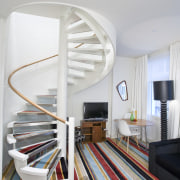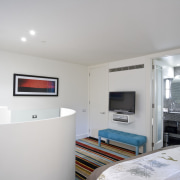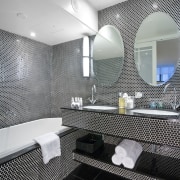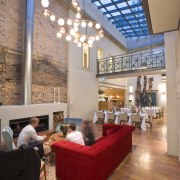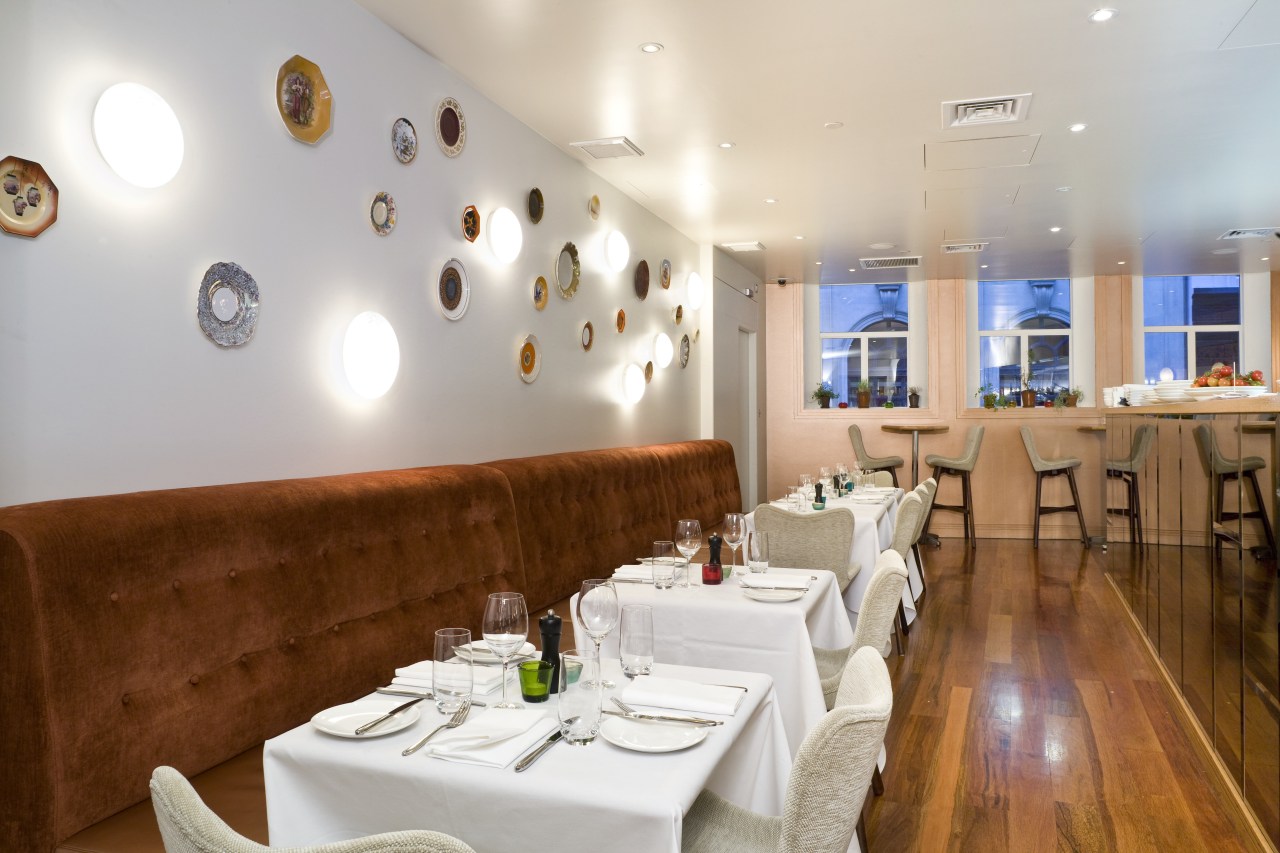Vibrant welcome
Built in the 1920s, Hotel DeBrett has been given a dramatic makeover that combines homage to its past with a bold, eclectic sensibility
In a time when many sleek, high-end hotels offer safe, middle-ground decor, there is room for a venue with a little individuality. In a competitive hospitality market, personality is an important point of difference.
The comprehensively refurbished Hotel DeBrett offers this exact brand of charm. Auckland's first-ever hotel was built on this site in 1841. The Commercial Hotel was destroyed by fire in 1858, but was rebuilt in 1925. In 1959 the hotel was given an extensive refit by Dominion Breweries and renamed Hotel DeBrett a turning point for New Zealand's tourism industry.
More recently, current owner Michelle Deery decided to totally revamp the hotel. Architectural firm Mitchinson Simiona and interior design firm Martin Hughes Design undertook the multifaceted project. Aspects included upgrading the entrance and stairway, and introducing 25 spacious rooms and suites, a guest drawing room, a central atrium and a new restaurant. Only the hotel's famous house bar has been left largely in its original form, with mainly restorative changes.
Throughout the resulting environment there is a sense of both the unexpected and the personal the hotel exudes comfort and warmth.
"What I wanted for the upgrade was to avoid the whole international style this could not be New York or London, or Wellington for that matter. The hotel has a friendly personality all of its own," says Deery. "This one-off ambience can be felt right from the street entrance, with its light-hearted capsicum-shaped planter, modern colour panels and restored terrazzo floor creating an intriguing, individualistic welcome."
Part of the character of the upgraded hotel lies in the merging of elements from its past with more modern pieces. Beyond the busy terrazzo, wooden floors have been retained and refinished, with Art Deco-inspired furniture adding to the traditional aspect of the decor.
"Mirrored tiles in the elevator reflect the colourful stripes of the custom carpet on the lift floor," says Deery. "This carpet, made in India from New Zealand wool, features extensively in the interiors it runs along corridors, up stairs and is found in all the hotel's guest rooms."
While this carpet makes a bold statement, the walls are generally in subdued tones, making the ideal backdrop for artworks and the brightly hued furniture, throws and curtains that feature throughout.
"Many of these furnishings and materials were designed to tone in with the carpet," says Deery.
The most famous room in the hotel, the iconic house bar, is one of the few spaces left largely in its original form. The floors and ceiling were taken out to introduce soundproofing and achieve modern fire rating requirements, and then carefully replaced.
If guests of the hotel don't feel like the high life of the hotel bar, there is a more restful option. A new addition to the amenities is a drawing room for house guests only. Finished in mid-20th century style, this is a space for guests to read, or perhaps play a board game and enjoy the bar facilities.
"The drawing room is reached from the far end of the hotel's new glass-roofed atrium," says Deery. "The atrium was a major part of the upgrade. Originally a walled-in space between three buildings, this has been opened up and turned into a courtyard. It now has the look of an interior street."
This airy, light-filled space features open fires and a dramatic water feature by local sculptor Jeff Thompson, and is lit by Judy Darragh chandeliers. Accessible from the House Bar, the atrium sits in close proximity to the new hotel restaurant, Kitchen.
"We chose the name to extend the feeling of warmth and invitation the kitchen being the traditional heart of the home," says Deery. "The restaurant's open kitchen and copper highlights support this idea."
In a hotel full of surprises, two suites continue the theme of unexpected elements. Created by combining existing guest rooms with a manager's apartment above, these rooms feature classic spiral staircases.
"The staircases involved some serious engineering," says Deery. "However, they suited both the up-and-down spaces and the ambience of the entire hotel." Other elements include mid-century modern design classics, and in both suites the bedroom at the top of the stairs is finished in similar tones.
"Despite the many traditional features, bathrooms offer every modern bathing convenience from a deep bath to double-head rain showers," Deery says.
Functionality does not take a back seat to the chic interior decoration. In-room wired broadband, data projectors and screens are just some of the technology that caters to the business side of life.
"With its custom, high-end furniture, quirky features and an abiding sense of warmth and welcome, Hotel DeBrett still has one thing in common with the original hotel," says Deery. "As the first hotel in Auckland it was one of a kind then and it is one of a kind now."
Credit list
Architect
Construction company
Mechanical and electrical engineer
Earthworks
Drapes
Wood flooring
Paints and varnishes
Additional furniture
Signage
Fire
Interior designers
Civil engineering
Quantity surveyor
Facade design
Blinds
Carpet
Lighting
Reception furniture
Bathroomware
Graphic design
Story by: Charles Moxham
Home kitchen bathroom commercial design
Diving into nature
Classic looks, contemporary efficiency
Personality plus



